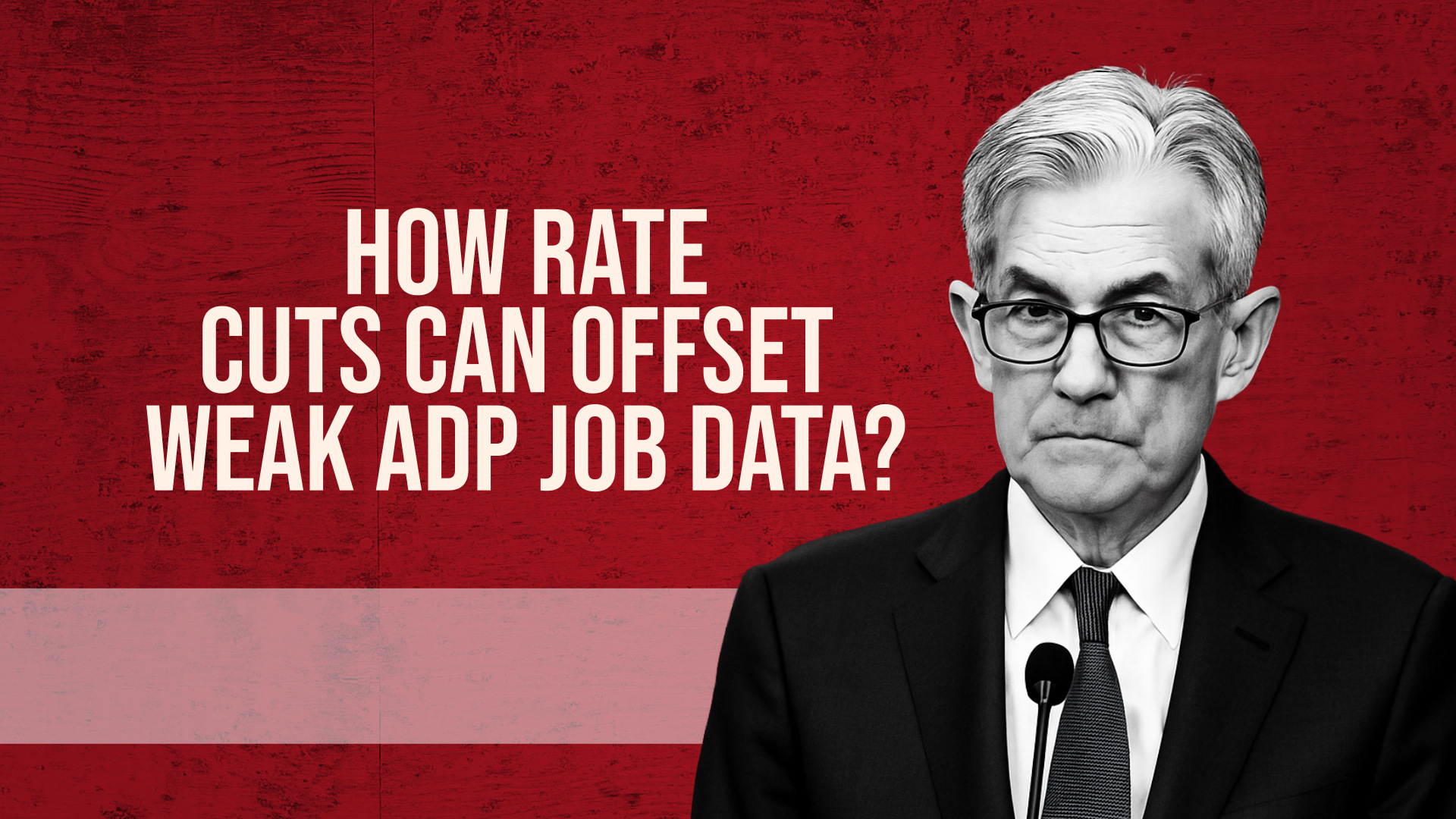The economy functions as an interconnected system where employment data serves as a crucial barometer for market health.
The ADP National Employment Report recently captured significant attention when it revealed U.S. private sector hiring in May 2025 added merely 37,000 jobs, substantially below the anticipated 110,000 and marking the weakest performance in over two years.
This disappointing report prompted President Donald Trump to publicly criticize Federal Reserve Chair Jerome Powell, labeling him “Too Late” and demanding interest rate cuts to stimulate economic growth.
Understanding why this employment figure carries such weight requires examining its cascading effects across stock markets, cryptocurrency markets, and global financial systems.
Table of Contents
What Is the ADP Job Data?
The ADP National Employment Report provides a monthly assessment of job creation and losses within U.S. private companies.
Published by ADP, a major payroll processing firm, this report emerges several days before the official Bureau of Labor Statistics (BLS) employment data. The report exclusively covers private sector employment across industries including manufacturing, healthcare, and technology, excluding government positions.
Employment data represents a fundamental economic indicator – robust job creation typically correlates with increased consumer spending, business confidence, and overall economic vitality.
The May 2025 report’s modest 37,000 job additions versus expectations of 110,000 triggered immediate concern among analysts and policymakers. Weak employment growth often signals corporate hesitation about expansion, potentially reflecting broader economic uncertainty.
Why the ADP Job Data Matters for the Stock Market?
Stock markets operate as sophisticated mechanisms reflecting investor confidence in corporate performance and economic prospects. The ADP employment data influences equity markets through several critical channels –
Economic Health Assessment: The recent 37,000 job figure represented a significant shortfall compared to projections, suggesting potential economic deceleration. Reduced hiring activity often precedes declining corporate revenues, as consumer spending contracts when employment opportunities diminish. Retail, hospitality, and consumer discretionary sectors typically experience immediate impact when employment growth stagnates.
Federal Reserve Policy Implications: The Federal Reserve relies heavily on employment metrics when determining monetary policy direction. Weak job creation data may influence the Fed toward accommodative policies, including interest rate reductions. Lower borrowing costs can stimulate stock valuations by reducing corporate financing expenses and making equity investments more attractive relative to fixed-income alternatives. Market commentary on social media platforms suggested this employment weakness could accelerate expectations for rate cuts, potentially supporting near-term equity performance.
Market Sentiment and Volatility: Unexpected employment weakness can trigger immediate market reactions, as investors reassess growth prospects and corporate earnings potential. The recent ADP disappointment generated discussions about potential stock market pressure, as weaker-than-expected data typically increases recession concerns and risk aversion among institutional investors.
Trump’s Criticism and Rate Cut Advocacy
President Trump responded forcefully to the employment data, posting on Truth Social:
‘Too Late’ Powell must now LOWER THE RATE. He is unbelievable!!! Europe has lowered NINE TIMES!”
This public pressure campaign reflects Trump’s ongoing advocacy for lower interest rates, which he characterizes as economic “jet fuel” for both growth and market performance.
Trump’s frustration stems from the Federal Reserve’s decision to maintain its benchmark rate within the 4.25%–4.5% range since December 2024, while international counterparts, particularly the European Central Bank, have implemented multiple rate reductions. This divergence creates tension between Trump’s economic agenda and Federal Reserve independence.
Trump’s position reflects concerns that his tariff policies – import taxes designed to protect domestic industries – could simultaneously slow economic growth and increase consumer prices. Lower interest rates could potentially offset these contractionary effects, though Fed Chair Powell has emphasized data-driven decision-making over political considerations. Powell’s caution reflects inflation concerns, particularly given that tariff implementations could create upward price pressures that would complicate aggressive rate cuts.
Weak ADP data amplifies concerns about tariffs’ economic drag. Rate cuts can offset this by lowering costs for businesses and consumers, encouraging spending and hiring despite tariff-related pressures.
Limitations and Risks of Rate Cuts
While rate cuts can help, they’re not a perfect fix –
Inflation Risk – Cutting rates too much could increase inflation, especially with Trump’s tariffs potentially raising prices. Higher inflation might erode consumer purchasing power, negating some benefits of rate cuts.
Delayed Impact – Rate cuts take time to affect the economy. The weak ADP data reflects immediate hiring trends, but rate cut benefits might not boost jobs for months.
Global Factors – Other central banks, like the European Central Bank (ECB) at 2.25%, also influence global markets. If their policies diverge from the Fed’s, it could complicate the impact of rate cuts on the U.S. economy.
The Mechanics of Interest Rate Policy
Interest rate adjustments function as primary tools for economic management, with rate reductions typically producing several stimulative effects:
Reduced Borrowing Costs: Lower rates decrease financing expenses for businesses and consumers, encouraging capital investment, expansion, and consumption. This increased economic activity often translates into job creation and corporate revenue growth.
Equity Market Support: Reduced interest rates make corporate borrowing more affordable while making dividend-paying stocks more attractive compared to lower-yielding bonds. This dual effect often supports stock valuations during rate-cutting cycles.
Economic Stimulus: Lower rates can stimulate demand across economic sectors, particularly benefiting interest-sensitive industries like real estate, automobiles, and capital goods.
However, rate cuts carry risks. Excessive monetary accommodation can generate inflationary pressures, where prices for essential goods and services rise faster than wages. Powell’s cautious approach reflects these concerns, particularly given potential inflationary effects from tariff policies.
ADP Data and Cryptocurrency Markets
The relationship between employment data and cryptocurrency markets, while less direct than traditional equity markets, operates through several mechanisms:
Short-term Market Dynamics: Weak employment data can create uncertainty in conventional markets, sometimes driving investors toward alternative assets including cryptocurrencies. However, the immediate reaction often involves risk reduction, which can pressure volatile assets like Bitcoin and Ethereum as investors seek stability during economic uncertainty.
Monetary Policy Expectations: Employment weakness that increases rate cut probabilities can benefit cryptocurrencies through multiple channels. Lower interest rates reduce the opportunity cost of holding non-yielding assets like Bitcoin, while potentially weakening the dollar and making alternative stores of value more attractive. Social media analysis suggested the recent employment weakness could prove beneficial for Bitcoin over longer time horizons, particularly if it accelerates Federal Reserve accommodation.
Sentiment and Risk Appetite: Cryptocurrency prices demonstrate high sensitivity to investor sentiment and risk appetite. Weak employment data can initially suppress crypto valuations as investors reduce exposure to volatile assets. However, if employment weakness translates into monetary accommodation, cryptocurrencies could benefit from increased liquidity and reduced traditional investment yields.
The employment data’s impact on cryptocurrency markets remains less predictable than traditional assets, but policy implications from weak job creation can significantly influence crypto market dynamics.
Global Central Bank Landscape: ECB, RBI, and Fed Comparison
Central banks worldwide navigate complex economic environments, with varying degrees of global influence based on their respective economies’ size and currency importance:
European Central Bank (ECB): The ECB manages monetary policy for the 19-nation Eurozone, recently reducing its main deposit rate to 2.25% in its eighth cut since June 2024. These reductions respond to weak regional growth and concerns about trade tensions from potential U.S. tariff policies. Trump has cited the ECB’s aggressive rate cuts as evidence that the Federal Reserve lags behind international peers. The ECB’s policies carry significant global weight given the Eurozone’s economic size and the euro’s role in international trade.
Reserve Bank of India (RBI): The RBI maintains India’s repo rate at approximately 6.5% as of early 2025, balancing inflation control with growth support in one of the world’s fastest-growing major economies. While the RBI’s decisions significantly impact emerging markets and regional trade, its global influence remains more limited than the Fed or ECB due to the rupee’s restricted international usage and India’s smaller, though rapidly expanding, economic footprint.
Federal Reserve (Fed): The Fed maintains paramount influence in global financial markets due to the U.S. dollar’s dominant role as the world’s primary reserve currency. The Fed’s current 4.25%–4.5% rate range affects global borrowing costs, international trade financing, and capital flows across all major markets. Federal Reserve policy decisions create immediate ripple effects through global equity markets, currency valuations, and commodity prices.
Why the Fed Matters Most?
The Fed’s influence overshadows other central banks because the U.S. dollar is the world’s primary reserve currency. Its rate decisions ripple globally, affecting everything from stock markets to crypto prices. A weak ADP report could push the Fed to cut rates, impacting not just the U.S. but also global economies.
Conclusion
The weak ADP job data (37,000 jobs in May 2025) signals a slowing economy, raising concerns about fewer jobs and less spending. Interest rate cuts can offset this by making borrowing cheaper, encouraging businesses to hire, boosting consumer spending, and supporting stock markets. The connection lies in how the ADP data influences Fed policy and investor expectations. While rate cuts can help counter the economic drag of weak job growth, they must be balanced against risks like inflation, especially with external pressures like tariffs.
This article is for informational purposes only and should not be considered financial advice. Investing in stocks, cryptocurrencies, or other assets involves risks, including the potential loss of principal. Always conduct your own research or consult a qualified financial advisor before making investment decisions. The author and publisher are not responsible for any financial losses incurred from actions based on this article. While efforts have been made to ensure accuracy, economic data and market conditions can change rapidly. The author and publisher do not guarantee the completeness or accuracy of the information and are not liable for any errors or omissions. Always verify data with primary sources before making decisions.

